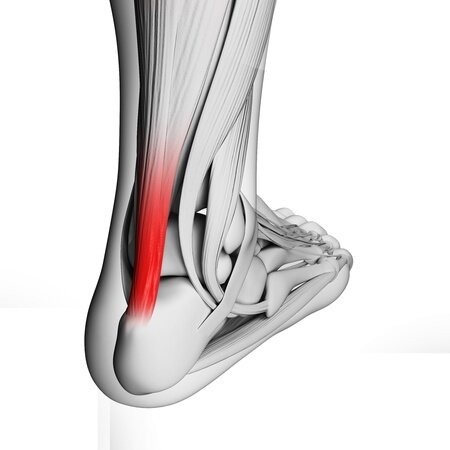In Greek mythology, Achilles was one of the greatest heroes and warriors. When he was young, his mother wanted to protect him from harm. She took him to the River Styx in the underworld. Holding him by the ankle, she dipped him in the river, which had magical powers. From then on, Achilles was invincible, except for the part on his heel where his mother held him as she put him in the river. Achilles grew up to fight in many battles for the Greeks. During a great war with the Trojans, it seemed he could not be defeated. No one except the god Apollo, who as on the Trojans' side, knew about his weakness. When it seemed like all was lost for the Trojans, Apollo re-directed an arrow from one of his warriors to hit Achilles right in his weak spot—the back of his heel. He was said to have died on the spot, though still undefeated in battle. To this day ‘Achilles’ Heel’ is used as an expression meaning ‘area of weakness’ or ‘vulnerable spot’.
Exciting story, right? But there is a real connection to the pain that many struggle with every day. Achilles tendinitis, or inflammation of tendon on the back of the heel, affects hundreds of thousands of people every year. Along with plantar fasciitis, Achilles tendonitis is the most common source of heel pain. Just like the myth, this problem often occurs in strong and active individuals—athletes, dancers, and especially runners.
Causes
Repeated stress. Repetitive movements, especially ones that require sudden stops and changes in direction.
Sudden, intense activity. Sometimes people who exercise infrequently, or only on weekends, are more prone to overstress their heel tendons if they push themselves too hard.
Flat feet. Over pronation can put more stress on the tendons when walking.
High heels. Prolonged periods of wearing heels can cause tension that can lead to shortening/thickening of the heel tendons.
Treatment
The RICE method. Rest, Ice, Compression, Elevation.
Oral pain medicine. NSAIDs like ibuprofen reduce pain and inflammation.
Orthotics. Certain inserts can soften the amount of impact on the heel to lessen the pain.
Nighttime splints. A splint will keep the tendon in a stretched position while sleeping.
Strengthening and stretching. Physical therapy exercises help relieve pain while promoting healing.
Prevention
Prevention for Achilles tendonitis will come down to proper training, variation in types of exercise, sufficient rest time, and well-fitting shoes for daily life and workout activities.
Still worried?
If your heel pain does not improve with the above strategies, an experienced foot doctor can talk to you about further treatment and surgical options.
Heel pain can make it hard to get through the day or do the things you love. If you’re experiencing pain in your heel, have questions about orthotics, or pain from a foot or ankle injury, Michele Kurlanski, DPM, is here to help! Call us today at 207-774-0028 to set up an appointment. Dr. Kurlanski provides skilled and professional podiatry care in Cumberland County, Maine, at Lighthouse Foot and Ankle Center in Scarborough.

